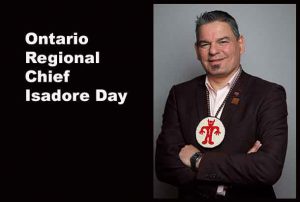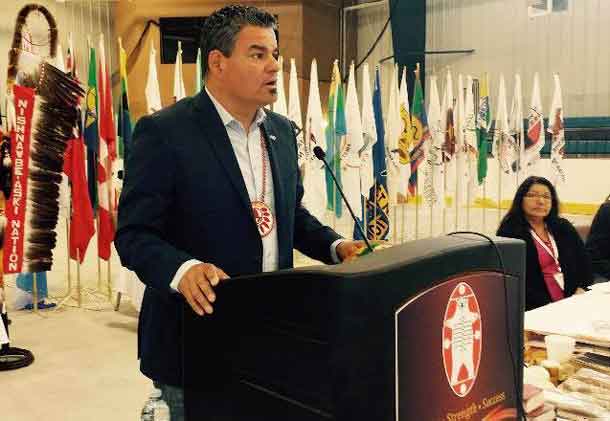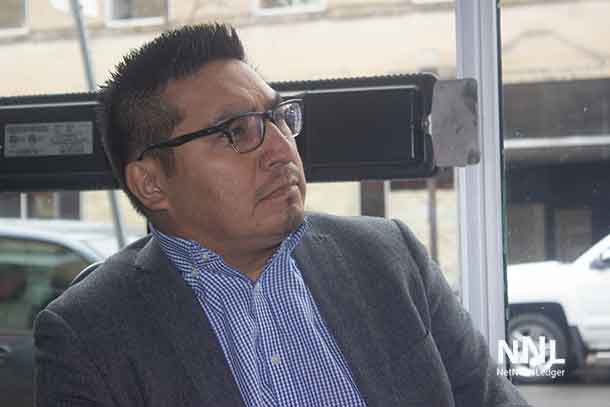 By Ontario Regional Chief Isadore Day
By Ontario Regional Chief Isadore Day
Ottawa – The purpose of the past two days was to come together with the provinces, territories and the federal government to identify our shared priorities, and a path forward, towards reforming the current system and making sure our children and families stay together. First Nations have faced generations of oppression and abuse because of paternalistic attitudes and policies from both the federal and provincial governments.
Residential School, the 60s scoop, and the millennial scoop – are all examples of policies and practices put in place to ‘help us’ — but they did the exact oppose. The current child welfare system continues to maintain the practices of separating our children from their families and communities. The current child welfare system is not a system to protect our children but is an industry built on the pain and suffering of our children and families. It’s a system that looks at our children like commodities.
Our communities are ready for change and ready to gain back control when it comes to their children and families. The governments of both Canada and Ontario are also ready and willing to make this happen. We have very willing partners in Indigenous Services Minister Jane Philpott and Children and Youth Services Minister Michael Coteau.
We are already well on our path to reuniting children with their families and communities. For example, Grand Council Treaty #3 has their own Child Welfare Law, Anishinaabe Abinoojii Inakonigewin – the Anishnawbek Nation are in the process of implementing own Child Well-Being Law as well.
We are looking to change how child well-being matters are handled in our communities.
Wikwemikong Unceded Indian Reserve has a community model that focuses on support their children and families and are prepared to implement it with the proper supports.
Oneida Nation of the Thames is ready to create a system where their children never leave have to leave their community. Nishnawbe Aski Nation is advocating for the needs of the remote north and working a remoteness quotient to show the true costs of delivering services in the remote communities.
There are a number of other grass-roots solutions in our communities and many a ready to take it to the next level when given the opportunity. The end result is that families must stay together. Families-at-risk must receive support and prevention services – We need to strengthen our families, not demonize them.
Children must remain in their communities. We must ensure our Children are connected to their language and culture. This involves predictable, long-term funding and building the capacity of communities for more prevention and intervention. We also need more access to culturally appropriate practices and tools.
The health and well-being of our children is not just a matter of child welfare. We need departments and ministries working together to help us improve the well-being of our children.
Our children in care need greater support and access to appropriate services.
Indigenous control of child welfare
Recognizing that First Nations have jurisdiction over their children regardless of where they reside.
Ontario and Child Welfare Reform
The Canadian Human Rights Tribunal found that the existing child welfare system is discriminatory to First Nations children and families in Ontario and across Canada.
A full-scale reform of existing policy, program delivery, and funding mechanisms in Ontario derived from the 1965 Indian Welfare Agreement (IWA) is necessary in order to address the over-representation and number of First Nations children in care.
First Nations, Ontario and Canada are working collaboratively, while taking a holistic approach, to address discrimination and issues surrounding jurisdiction within the child welfare system.
The goal of such reform is to create (a) child and family services systems based on which will lead to substantive equality so that every child across Ontario receives the services they need to thrive.”
Ontario Regional Chief Isadore Day







